Bee Cozumel
What is happening with the bees in Cozumel?
An interview & A Call to Help with “Bee Friendly Cozumel”
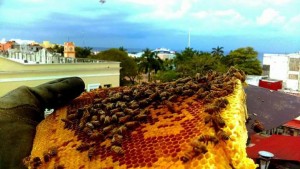
There are many places in the world where bees have disappeared, and although humans were able to create technologies to replace them, we know very well that that is not the solution. Protect, preserve and save the species is, I believe, the best answer to a serious environmental problem.
What I the situation of the bees in Cozumel?
We must acknowledge that throughout the years their territory has been sadly adjusted, and it is being so even more. Nowadays bees have migrated into the city; they adapted to our way of life, living in gardens and urban orchards. And you would be quite surprised to learn these urban bees will find most of their nectar in our trash, in refined sugar, ice cream, drinks and sugary things in the trashcans of stores or bars.
Cozumel citizens have witnessed the attack of bees several times from the trashcans at the waterfront or at the Benito Juarez Park. Specialists explained that this happened during periods in the year when there are only few flowers.
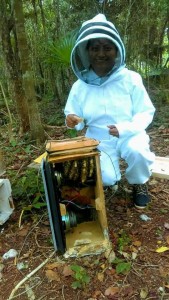
At present, urban bees make their hives anywhere: tires, old speakers, air conditioner s, walls, roofs. And people are upset. In the past, a call to Civil Protection regarding a bee problem at home would end in genocide.
The UN recognized the bee as the most important being on the planet. What are we doing?
A grass-root movement began gaining strength in the social media and took the lead providing beekeeper’s contact numbers available to the public, in order to save bees and not kill them!
Some beekeepers answered a call made by Martha Chavez and her husband, parents of 4 children. After several interventions, Civil Protection got in contact with them and decided to work together in order to save the bees. Consequently, 5 volunteers created Bee Friendly Cozumel: Martha, William, Luis, Fernando and Joe. They work without resources in their free time and in the afternoon they turn into beekeepers. Not all are beekeepers, but they all really love bees.
Coz4You: What kind of bees does Bee Friendly Cozumel rescue?
Martha Chavez: Melipona, Apis Meliferas as well as European crossbred with African ones.
Coz4You: Once rescued, where do the bees go?
-When we rescue bees we take them to the apiary where we make them comfortable and leave them; place them on bases so no bugs or ants come in. Every second day we check if a new queen cell has been built; if the queen is in good conditions; that there is no varroa mite; check their work; put wax if they are working fast in collecting honey, so they do not make honeycombs on the lid. That is what is done after their rescue. Give them water.
Coz4You: How much does an afternoon rescue cost?
-In general, we begin at 5 in the afternoon, right after our regular jobs and could end around 11 at night. It all depends. We have had to rescue up to 4 hives the same day. The cost of a rescue day is around $500 pesos.
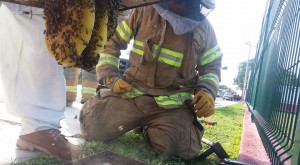
Currently you do not know if you will be able to continue as not having resources makes it a bit difficult. What else do you need?
We need resources to buy the material with which the boxes are made, and wax so they may be able to work. Also, medicine is required to fight the varroa mite, and bases to place the beehive boxed in order to avoid ants.
If you can get the funds, what is the purpose of the Bee Friendly Cozumel project?
Save bees so they can be placed in a location where they can be comfortable without harming anyone.
The purpose is to create awareness so the community can learn the special role bees have in this planet, in our food and pollination to our plants. In addition, we want to reach schools so children, who are the new generation, may learn about bees and know here honey comes from. If this project works with enough beehives, people that need a job will be hired and will learn to rescue bees as well as to make products out of honey. This project also gives the opportunity to middle and high school students to do some training in the apiary. However, as now is just the start-up we need that nudge to be able to continue rescuing bees so that in the future we may be able to provide support and reach the children who are the future of Cozumel.
Thank you, Martha, we wish you all success and support. 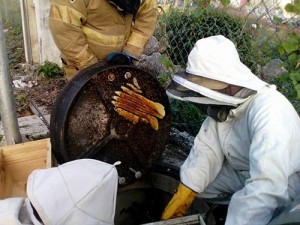
To celebrate the World Bee Day in Cozumel and raise funds, Bee Friendly Cozumel and the firemen planned a festival for May 20th.but it was cancelled due to local elections. To date there have been talks of organizing it again for July, but there is still no date for it. In the world there are many funds to help the bees, and Bee Friendly Cozumel must organize itself as a non-profit association (Asociación Civil or A.C. in Spanish) in order to have access to those funds and be independent. But I wish to remind you that setting-up an AC in Mexico has a cost of $12,000 pesos and at present this pilot project is unable to pay for it.
If you wish to help this beautiful project, I invite all to contact Martha at befriendlycozumel@gmail.com; you may also find them in Facebook. And if you wish to learn more, contact Martha to visit rescued bees.
Vanessa Nini, who is originally from France, is a long-term resident who cares deeply for environmental issues. She has written various articles for both the Playa Times and Cozumel 4 you.
¿Qué pasa con las abejas en Cozumel?
Una entrevista y llamado para ayudar a “Bee Friendly Cozumel” ….

Hay muchos sitios en el mundo donde las abejas han desaparecido y aunque el humano logró inventar algunas tecnologías para reemplazarlas, bien sabemos que esa no es la solución. Creo que proteger, preservar y salvar a las especies es la mejor repuesta a un problema medioambiental tan grave.
¿Cuál es la situación que viven las abejas en Cozumel?
Tenemos que reconocer que desde hace varios años su territorio se ha tenido que ajustar y y lo es cada vez más. En la actualidad, muchas abejas han migrado hasta la ciudad, adaptándose a nuestro modo de vida, viviendo en jardines y huertos urbanos; y se sorprenderán al saber que estas abejas urbanas encuentran la mayor parte de su néctar en nuestra basura, en el azúcar refinado, en helados, jugos, bebidas, y lo que se encuentre en basureros de tiendas o de bares que contenga azúcar.
En varias ocasiones los ciudadanos de Cozumel han sido testigos del ataque de abejas desde la basura en el Malecón o en el parque Benito Juárez. Los especialistas explicaron que eso sucedió en los periodos en el año donde hay poca flor.
Hoy día las abejas urbanas elaboran su colmena en cualquier sitio: llantas, bocinas viejas aires acondicionados, paredes, techos. La gente está molesta. En el pasado, una llamada a Protección Civil por un problema de abejas en casa terminaba en genocidio.
La ONU reconoció a la abeja como el ser más importante del planeta. ¿Qué estamos haciendo?
En redes sociales comenzó a tomar fuerza un movimiento ciudadano que creó la iniciativa de poner a disposición de la gente los números telefónicos de contacto de apicultores, ¡para rescatar a las abejas y no matarlas!
Unos apicultores respondieron a la llamada Martha Chávez y de su esposo , padres de 4 niños. Después varias intervenciones, Protección Civil se puso en contacto con ellos y decidieron trabajar juntos para rescatar a las abejas. Entonces se creó “Bee Friendly Cozumel“ con 5 voluntarios: Martha, William, Luis, Fernando y Joe. Ellos trabajan sin recursos, en su tiempo libre, y por la tarde se transforman en rescatistas de abejas. No todos son apicultores, pero todos realmente aman a las abejas.
Coz4You : ¿Qué clase de abejas rescata Bee Friendly Cozumel?
Martha Chávez : Todas Meliponas, Apis Meliferas y también abejas europeas con cruza de abeja africana.
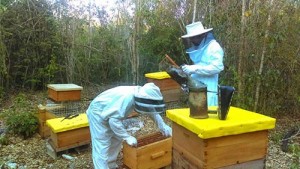
Coz4you: Una vez rescatadas, ¿a dónde van las abejas ?
– Cuando rescatamos abejas las llevamos al apiario donde las ponemos cómodas y las dejamos; las colocamos sobre bases para que no entren insectos u hormigas. Cada segundo día verificamos cómo se encuentran en el apiario, si ya elaboraron alguna celda real, si la reina se encuentra en buen estado; verificamos que no haya presencia de varrosis y observar cómo trabajan. Colocamos cera si están laborando rápidamente en la recolección de miel para que no hagan un pañal sobre a tapa. Eso se hace después del rescate. Darles agua.
¿Qué costo tiene el rescate en el transcurso de una tarde?
Por lo general comenzamos a las 5 de la tarde después de concluir nuestras respectivas labores, y es posible que terminemos alrededor de las 11 de la noche. Todo depende; aunque hemos rescatado hasta 4 colmenas en un mismo día. El costo de un día de rescate es de alrededor de $500 pesos.
Ahora no saben si les será posible continuar ya que sin los recursos necesarios es algo difícil. ¿Qué más necesitan?
Lo que urge es comprar material para fabricar las cajas, y cera para que ellas puedan trabajar. También se necesita medicamento para combatir la varrosis y bases para colocar las cajas y que no se llenen de hormigas.
¿Cuál es el objetivo del proyecto Bee Friendly Cozumel si consiguen los fondos para continuarlo?
Que las abejas puedan ser salvadas y colocarlas en un sitio donde estén cómodas, sin dañar a nadie.
El objetivo es que la comunidad tome conciencia y comprenda el papel especial que tienen las abejas en este planeta, en nuestros alimentos, a través de la polinización que ellas hacen a nuestras plantas. Además queremos llegar a las escuelas para que los pequeños, quienes son la nueva generación, puedan aprender sobre las abejas y saber de dónde proviene su miel. Si este proyecto llega a operar con suficientes colmenas, se pretende contratar a personas que necesiten empleo y aprendan a rescatar abejas, y a fabricar productos a base de miel. Este proyecto también brinda la oportunidad a estudiantes de secundaria y de preparatoria de realizar algún tipo de práctica en el apiario. Sin
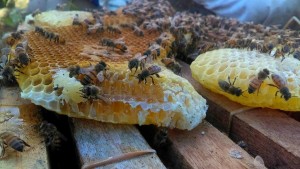
embargo, como apenas es el principio necesitamos un empujón para poder continuar rescatando abejas, y nos sea posible en el futuro apoyar y llegar a los niños que son el futuro de Cozumel.
Gracias Martha; le deseamos mucho éxito y mucho apoyo.
Bee Friendly Cozumel y los bomberos habían planeado un festival para celebrar el Día Mundial de la Abeja el día 20 de mayo, y recaudar fondos. Sin embargo, este festival fue cancelado en virtud de las elecciones municipales. A la fecha se han entablado pláticas para hacerlo en Julio, pero aún no se ha concretado nada. En el mundo existen múltiples fondos para apoyar a las abejas. Es necesario que Bee Friendly Cozumel se constituya en una Asociación Civil y poder tener acceso a esos fondos y ser independiente. Pero quiero recordarles que constituir una AC en México tiene un costo de $12 000 pesos y por el momento este proyecto piloto no puede pagarlo.
Si desean apoyar a este hermoso proyecto, los invito a ponerse en contacto con Martha escribiendo a beefriendlycozumel@gmail.com. También pueden encontrarlos en Facebook. Y si desean obtener mayor información, pónganse en contacto con Martha para visitar a las abejas rescatadas.
Vanessa Nini es oriunda de Francia, ha vivido en Cozumel desde hace largo tiempo y se preocupa profundamente por temas del medio ambiente. Ha escrito diversos artículos, tanto en Playa Times como en Cozumel 4 You.
______________________________
Una ex yanqui de Connecticut quien llama hogar a Cozumel desde hace más de 15 años. Laura escapó al Caribe hace años, desplazándose de una isla a otra dando clases de BUCEO. Se dedicó a perder el tiempo en Jamaica y finalmente se detuvo en Cozumel para pasar unas vacaciones de 2 semanas que aún no terminan. Convenciendo a sus padres que pagaran una elegante universidad privada, obtuvo su título en Periodismo y Laura crea semanalmente Cozumel 4You, medios sociales y artículos promocionales sobre la Isla y también es moderadora en el grupo Cozumel 4 You en Facebook que actualmente cuenta con 25,000 miembros. Fabián, s umuy tolerante marido, desde hace mucho tiempo se resignó a no tener vida privada, pues se ha visto implicado en los diversos proyectos y planes que urde Laura. Son orgullosos padres de diversos perros y gatos rescatados. Mientras contempla su paso a través de la vida en el Caribe mexicano,Laura continúa siendo la pesadilla en la existencia de su muy tradicional suegra mexicana.
- Lost Diver Cozumel - April 4, 2025
- Cancun Airport Arrival Easier - April 4, 2025
- Cozumel Sargassum Seaweed - April 4, 2025
An ex-Connecticut Yankee who has called Cozumel home for over 18 years, Laura ran away to the Caribbean years ago, bumped around the islands teaching SCUBA diving, lost some time in Jamaica, and finally stopped in Cozumel for a 2 week vacation that hasn’t ended yet. With a degree in Journalism from a fancy private college she convinced her parents to pay for, Laura writes, edits, and creates the weekly Cozumel 4 You news, social media, and promotional articles about the island, as well as moderates the Cozumel 4 You Facebook group, which currently has over 25,000 members. Her long suffering husband, Fabian, has long since resigned himself to having zero private life, as he’s been involved in her various schemes and plots since his arrival. Proud parents to a variety of rescue dogs and cats, Laura continues to be the bane of her traditional Mexican mother-in-law’s existence, as she muses her way through life in the Mexican Caribbean. ______________________________ Una ex yanqui de Connecticut quien llama hogar a Cozumel desde hace más de 15 años. Laura escapó al Caribe hace años, desplazándose de una isla a otra dando clases de BUCEO. Se dedicó a perder el tiempo en Jamaica y finalmente se detuvo en Cozumel para pasar unas vacaciones de 2 semanas que aún no terminan. Convenciendo a sus padres que pagaran una elegante universidad privada, obtuvo su título en Periodismo y Laura crea semanalmente Cozumel 4You, medios sociales y artículos promocionales sobre la Isla y también es moderadora en el grupo Cozumel 4 You en Facebook que actualmente cuenta con 25,000 miembros. Fabián, s umuy tolerante marido, desde hace mucho tiempo se resignó a no tener vida privada, pues se ha visto implicado en los diversos proyectos y planes que urde Laura. Son orgullosos padres de diversos perros y gatos rescatados. Mientras contempla su paso a través de la vida en el Caribe mexicano, Laura continúa siendo la pesadilla en la existencia de su muy tradicional suegra mexicana.
1 Comment
Leave a Reply Cancel reply
Cozumel Sargassum Seaweed
Cozumel Sargassum Seaweed Spring is Here & so is Sargassum The sargassum...
Reef Care Parrotfish Slaughter Cozumel
Reef Care Parrotfish Slaughter Cozumel “Caring for our reefs is everyone’s responsibility,”...
Cozumel Flamingo
Cozumel Flamingo Flamingos Finally Return to Cozumel Punta Sur Representatives...
Cozumel Lifeguards Rescue Rip Current
Cozumel Lifeguards Rescue Rip Current Cozumel’s Lifeguards Rescue Swimmer from Strong Rip...








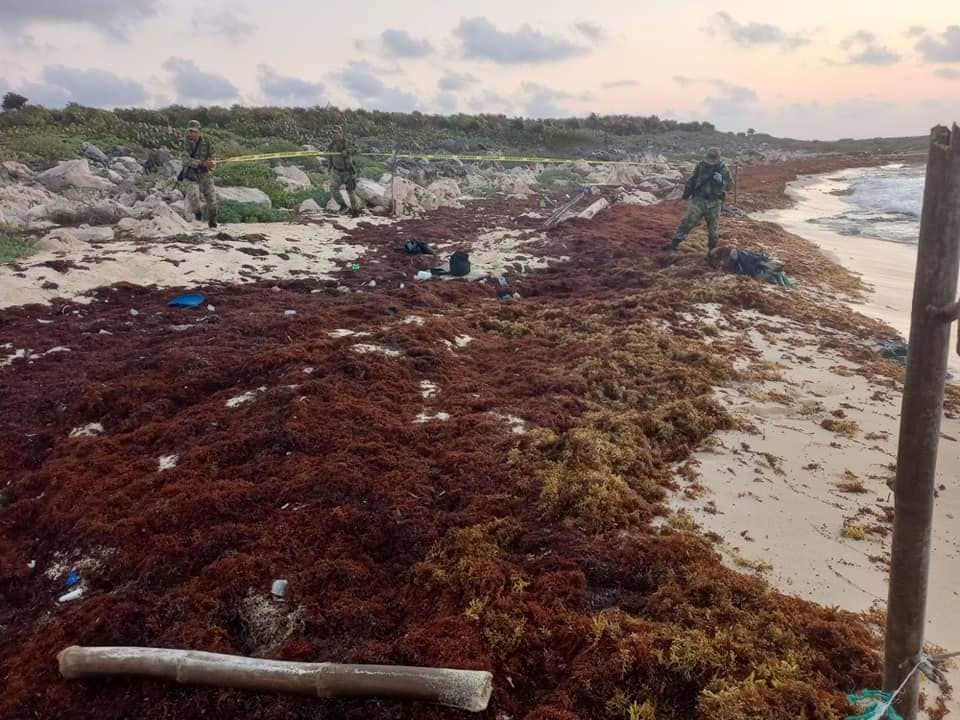
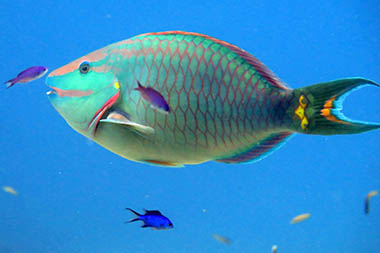
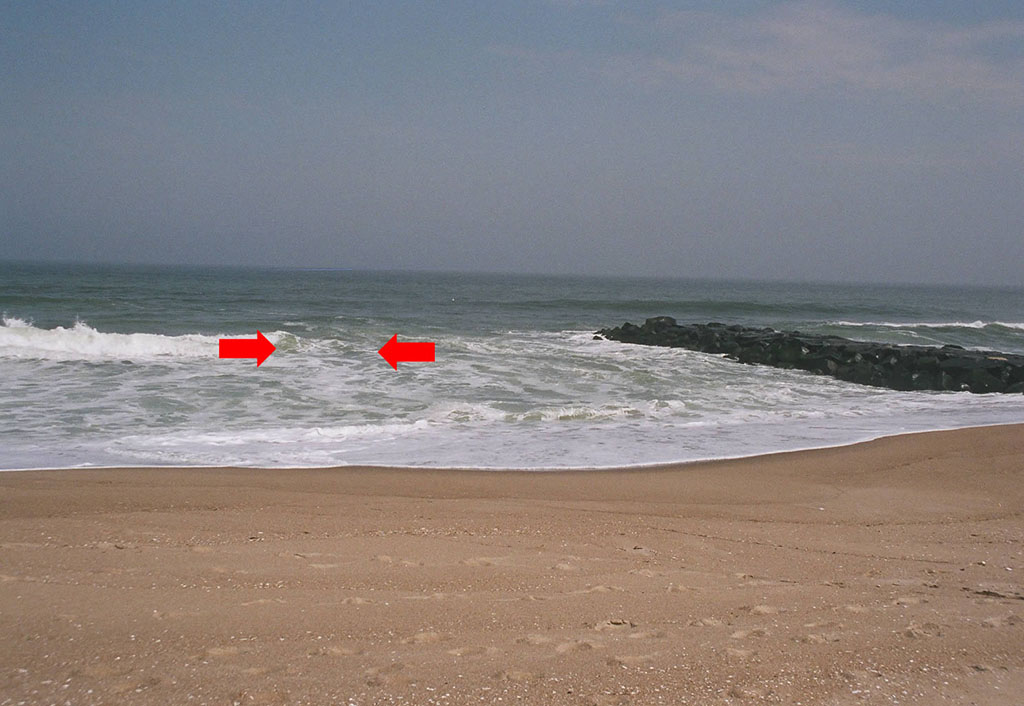








Where can I buy some of this raw honey?